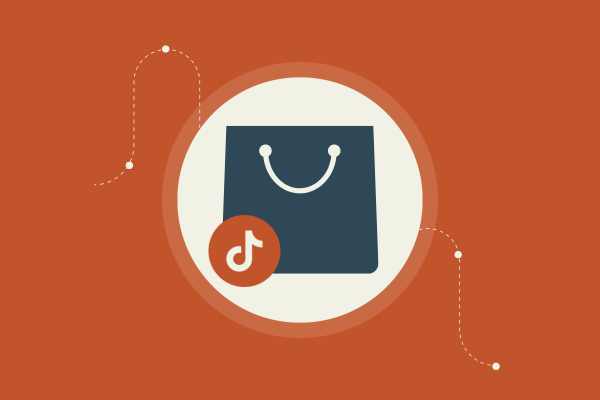How Smart Working Capital Management Boosts Your eCommerce Growth
Scaling your eCommerce store takes more than just increasing sales. It requires smart working capital management to keep cash flow solid and operations running smoothly. Mastering your working capital means having the flexibility to grow without hitting financial roadblocks.
First up, you’ve got to optimize your cash flow. Inefficient cash flow is a common pitfall and can slow your growth. You need to know when to invest in inventory and when to hold back. Plus, streamlining your payment and receivables processes can free up funds to capitalize on new growth opportunities.
Next, don't forget technology. Using the right tools can make a big difference, helping you scale efficiently with excellent customer experience. It's all about making smart, informed decisions to ensure sustainable growth.
Key Takeaways
Effective cash flow boosts eCommerce growth.
Smart tech use is crucial for scaling.
Streamlining boosts operational efficiency.
The Lifeblood of eCommerce: Cash Flow
Cash flow is the beating heart of your eCommerce journey. It's what keeps your store alive and thriving. Understanding your cash flow helps ensure you have money ready when you need it. Dive into how these elements create a healthier business.
Understanding the Basics of Cash Flow
Cash flow is simply the movement of money in and out of your business. Positive cash flow means more cash is coming in than going out. Without it, paying suppliers, covering expenses, and planning for growth become tough.
Imagine cash as the fuel for your eCommerce engine. If it stops flowing, everything grinds to a halt. Tracking current assets and current liabilities is crucial. To get a grip on cash flow, keep an eye on the balance between what you own and owe. Keep cash reserves handy for unexpected bumps. Testing different financial scenarios can be a game-changer.
Key Indicators: Profit Margins and Profitability
Profit margins and profitability are your guiding stars. They show how well you're converting sales into actual profit. Higher profit margins mean you're keeping more money from each sale.
Start by analyzing your costs against your sales. The difference gives you the margin. Boosting your margins can lead to better cash flow and stronger financial health. Don't ignore small changes in costs; they add up quickly.
Profitability keeps the lights on. It ensures you’re not just running in place but actually moving forward. Reviewing these indicators helps you stay nimble and ready to scale up. Adjust, pivot, and fine-tune to keep your profits up and cash flow positive.
Optimizing Inventory
Managing your eCommerce store's inventory efficiently is crucial for your growth. Keep inventory levels in check to save money, reduce waste, and stay ahead of demand. Smart management leads to more sales and less stress.
Inventory Management Strategies
To manage inventory like a pro, first focus on the basics. Use tools for efficient tracking and monitoring of inventory levels. This includes investing in technology like barcode scanners and RFID tags. By keeping tabs on stock levels, you prevent stockouts and overstock situations.
Next, consider the inventory turnover ratio. A higher ratio means you're selling inventory quickly, which is good. Low turnover? That signals you're sitting on too much stock. Cut storage costs by keeping your ratio high.
Remember to stay flexible with your suppliers. Diversifying your supply chain reduces risks from delays or shortages. Building strong relationships with suppliers can also lead to better terms.
Forecasting Demand and Just-In-Time Inventory
Understanding demand is key to keeping stock levels optimal. Use data analysis to forecast demand accurately. This involves looking back at sales data, identifying trends, and staying aware of seasonal fluctuations.
Consider just-in-time (JIT) inventory. It helps you keep stock levels low while still meeting demand. Order inventory only when it's needed, reducing storage costs and waste.
Balancing tight supply chain management with accurate demand forecasting is your path to success. Efficient use of JIT can significantly cut costs and improve cash flow, allowing you to reinvest in your business growth. Keep an eye on trends and adjust your strategy as necessary to stay competitive.
Efficient Fulfillment Operations
Making your fulfillment operations efficient is key to scaling your eCommerce store. Get smarter with automation, cut down on shipping time and costs, and leverage dropshipping to boost your business.
The Role of Automation in Fulfillment
Automation is a game changer. With automated systems, you can streamline order fulfillment with ease. Think inventory updates, order processing, and even tracking shipments—done with minimal human error.
Using software for logistics can speed up your tasks. Order management systems and automated warehouses can help lower your labor costs while increasing accuracy. Imagine less time sorting and more time shipping.
Automated solutions also improve customer satisfaction. Real-time tracking keeps your customers in the loop, boosting trust and loyalty. You save time, customers stay happy. Win-win!
Minimizing Shipping Costs and Time
Shipping can burn a hole in your pocket. Finding ways to cut down these costs is crucial. Negotiate rates with carriers. It’s possible to get discounts by shipping in bulk or using a fulfillment service with established partners.
Think about delivery times too. Customers want fast shipping, and delays can lead to negative reviews. Use distribution centers close to your customers. This can slash delivery times and cut shipping costs.
Also, consider flat-rate shipping. It helps standardize costs and keeps things simple for you and the buyers. Fast, affordable shipping can be your competitive edge.
Leveraging Dropshipping and eCommerce Fulfillment
Dropshipping lets you sell products without holding inventory. It’s a sweet deal for many because it cuts down on overhead costs. No more warehouses and no inventory headaches.
But be careful. Always choose reliable suppliers. Poor supplier performance can hurt your business. Make sure they’re consistent with order fulfillment and delivery times.
Using a dropshipping model in tandem with traditional eCommerce fulfillment can offer flexibility. You can handle some products in your warehouse while letting suppliers manage others. It gives you the power to test new products without a big investment risk.
Scale smartly and keep the logistics smooth. This way, you’ll grow your eCommerce store effectively while maintaining customer satisfaction.
Streamlining Payments and Receivables
Efficient management of payments and receivables can enhance the cash flow of your eCommerce store. By leveraging modern technology and smart strategies, you can ensure smoother transactions and boost business growth.
Navigating Payment Processing and Gateways
You want fast, secure payments, right? That’s where payment gateways come in. They act as the middlemen between your store and the bank, ensuring everything goes smoothly.
Utilize reliable payment processors to avoid glitches. They support credit cards, bank transfers, and even digital wallets. Some popular options include Stripe and PayPal.
Don’t overlook security! Ensure your gateway is PCI compliant to protect customer data. Speed matters too. Fast gateways mean happy customers who don’t have to wait around.
Consider fees. Some gateways charge a flat fee, while others take a percentage. Choose what makes sense for your sales volume. Keep it simple, keep it streamlined.
Managing Accounts Receivable for Better Cash Flow
Got unpaid invoices stacking up? Time to tackle those accounts receivable. Automate billing with software like QuickBooks or FreshBooks. It speeds up invoicing and reduces errors.
Set clear policies. Have rules for reminders and late payment fees. This keeps the cash coming in regularly. Track payments to know who hasn't paid. It helps prevent cash flow problems.
Consider discounts for early payments. It’s a smart way to get cash in the door quickly. Use reports to review patterns. Spot slow payers and deal with them promptly. Stay on top of your receivables for a healthier cash flow.
Payment Terms and Options for Customers
Think about your payment terms. Offering flexibility can attract and retain customers. Let them choose from a variety of options.
Consider net 30, net 60, or upfront payments based on your business strategy. Give choices, like one-time payments or installment plans. Offer terms that work for both you and your customers.
Digital options are key. Accepting payments via digital wallets like Apple Pay and Google Pay can make buying seamless. Show you care about ease and flexibility. Listen to your customers’ needs, and see what works best for your store's growth.
Capitalizing on Growth Opportunities
When you're running an eCommerce store, having smart working capital management is like having a secret weapon. It can give you the edge to seize new growth opportunities, differentiate from competitors, and keep scaling up.
Exploring Funding and Financing for Growth
Let's get to the heart of scaling your eCommerce business. Understanding the different funding options available is crucial. You might consider equity financing which involves trading some ownership for cash. This could come from angel investors, venture capitalists, or even crowdfunding platforms like Kickstarter.
Then there's debt financing. This could be through small business loans which tend to have specific requirements, or through newer financial instruments tailored to online businesses.
Getting a mix of both might be possible. Just make sure it aligns with your financial forecasting and business goals. You're aiming for flexibility without excessive risk.
Understanding Working Capital Loans and Options
Now, if you want to keep the cash flow strong, look into working capital loans. These loans help you manage day-to-day expenses, giving you the liquidity needed to seize those golden growth opportunities. Plus, they're usually easier to get than traditional loans.
Some popular options include lines of credit which act as a rainy-day fund. You only pay interest on the amount you borrow. Invoice financing can also speed up cash flow, allowing you to get paid upfront for outstanding invoices.
Merchant cash advances are another tool, giving you a lump sum in exchange for a percentage of future sales. Each option has its pros and cons, so weigh them carefully before deciding.
By being strategic, you'll be able to capitalize on growth opportunities and stay ahead of competition.
Marketing for a Competitive Edge
To boost your eCommerce store, focus on using smart marketing tactics. Tap into social media, personalize the customer journey, and leverage SEO strategies to stay ahead of the competition.
Leveraging Social Media and Email Campaigns
Social media is your playground. It's where you meet your customers and start conversations. Dive into platforms like Instagram, Facebook, and TikTok. Post engaging content that catches eyes. Use videos, polls, and stories to keep followers hooked.
Email marketing is your secret weapon. Segment your audience to send targeted messages. Offer exclusive deals to loyal customers. Make subject lines pop to increase open rates. A/B testing helps you understand what works best.
Join forces. Run campaigns that intersect both email and social media. Promote newsletter sign-ups via social platforms. This dual approach expands your reach and gathers valuable data.
Enhancing Customer Journey with Personalization
Every customer wants to feel special. Make their journey memorable. Personalization is key. Use data to tailor their experience. Show product recommendations based on browsing history. Send follow-up emails about items left in the cart.
Get creative with personalized content. Dynamic product descriptions engage more. Tools like chatbots offer instant responses to queries. They ensure a smoother journey, reducing bounce rates.
Pay attention to feedback. It's gold. Use it to refine the experience. Happy customers are more likely to return and recommend your store to others.
SEO and Content Strategies for eCommerce
Let’s talk about getting found. SEO is your best friend. Research keywords your audience is searching for. Sprinkle them naturally throughout your product descriptions and blog posts. Don’t overdo it.
Quality content draws people in. Write blog posts that answer common questions. Share tips and tricks related to your products. SEO isn’t just about keywords; it’s about delivering value.
Optimize product images. Include alt-text for accessibility and search visibility. Make sure your site speed is lightning-fast. Slow pages lose visitors. Regularly review analytics to adapt your strategies. Traffic will follow when you focus on these essentials.
Elevating Customer Experience
Boost your eCommerce game by focusing on the customer. Make them feel valued and appreciated. You build a loyal base by doing more than just selling a product. You create a personal connection that keeps them coming back.
The Power of Customer Service and Support
Great customer service can turn a one-time buyer into a repeat customer. It’s all about addressing their needs quickly and efficiently. When you support them well, you improve their experience and, in turn, their loyalty.
Make sure your support team is top-notch. Fast responses and knowledgeable answers are key. Train your team to handle queries with empathy. Equip them with the right tools to make the customer’s journey smooth.
Consider offering promotions for feedback. Better insights lead to better service. It's not just about solving problems. It's about building relationships and increasing conversion rates. Customers who feel heard are more likely to trust and stay loyal to your brand.
Innovations Like Chatbots in Customer Relationships
Chatbots are your secret weapon. They revolutionize how you interact with customers. Available 24/7, they provide instant answers and streamline interactions.
These little bots can handle FAQs, track orders, and even offer personalized promotions. They cut down on wait times, enhancing customer satisfaction. Plus, they free up your human team for more complex issues.
Chatbots can also gather data to refine your strategies. Use that info to tailor experiences and improve customer retention. They’re like a bridge to better customer relationships, helping you stay connected without the need for constant human intervention.
Incorporate chatbots with customer support for a full-circle service model. It’s smart, efficient, and exactly what your eCommerce store needs to scale up.
Driving Sustainable Growth
You need to keep your eCommerce store on the path to sustainable growth. The magic formula involves watching those numbers like a hawk. Get cozy with your financial metrics and see how they can shape your future.
Financial and Performance Metrics to Watch
Start by diving into your key performance indicators (KPIs). These are your business's heartbeat. Net profit, margin ratios, and cash flow paint the picture. If you're not eyeballing these, you might miss vital signs.
Next up, there's inventory. Your inventory turnover ratio tells you how quickly items fly off the shelves. A high ratio? You’ve got a winner! A low one signals a need for action. Maybe it’s time to rethink your ordering strategy.
Getting a handle on seasonal trends can prevent surprises. Big sales spikes in December? Start stocking up in October. Budgeting becomes a smooth ride when you forecast based on these patterns.
Lastly, flip through financial statements from time to time. Balance sheets and income statements are your cheat sheet to knowing what’s working or where the holes are. Digging into your numbers means you're playing smart, not just hard!
Scaling with Technology
Technology is your ally on the path to growth. By integrating smart tools, you can automate processes and reach customers more effectively. The right platforms simplify tasks and boost your e-commerce journey.
Integrating E-commerce Tools and Platforms
Pick the right tools to boost your business. Automation can handle repetitive tasks. This reduces errors, saves time, and scales operations with ease.
Platforms like Shopify or BigCommerce give you robust features. They support growth through various integrations. Think of tools that manage inventory or handle customer service.
Don't skip market research. Find what your customers want. Use data for decisions. E-commerce tools like analytics platforms offer insights that are game-changers. This way, you align your strategies with customer needs.
By leveraging these tech advantages, you can elevate your business and thrive in competitive markets. Don’t just work hard—work smart with tech.







